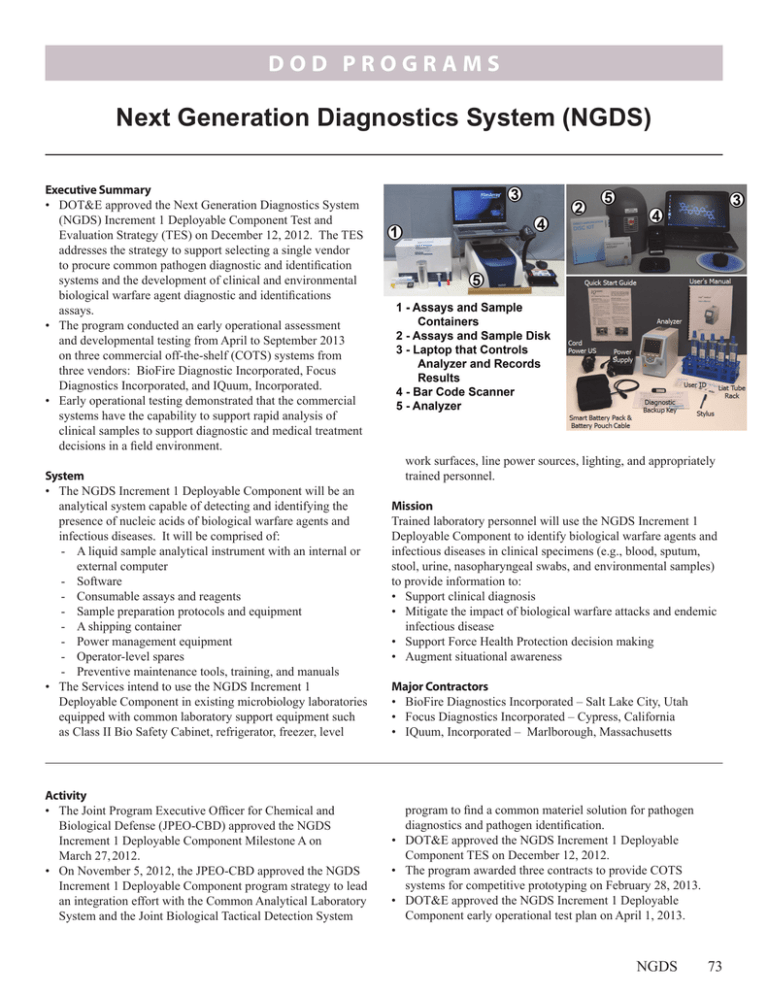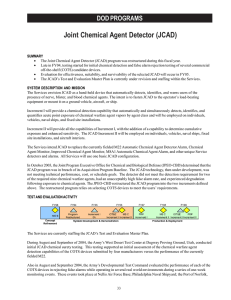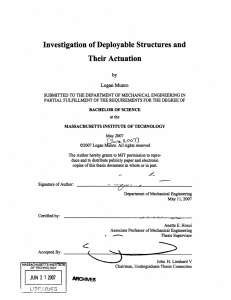Next Generation Diagnostics System (NGDS)
advertisement

DOD PROGRAMS Next Generation Diagnostics System (NGDS) Executive Summary • DOT&E approved the Next Generation Diagnostics System (NGDS) Increment 1 Deployable Component Test and Evaluation Strategy (TES) on December 12, 2012. The TES addresses the strategy to support selecting a single vendor to procure common pathogen diagnostic and identification systems and the development of clinical and environmental biological warfare agent diagnostic and identifications assays. • The program conducted an early operational assessment and developmental testing from April to September 2013 on three commercial off-the-shelf (COTS) systems from three vendors: BioFire Diagnostic Incorporated, Focus Diagnostics Incorporated, and IQuum, Incorporated. • Early operational testing demonstrated that the commercial systems have the capability to support rapid analysis of clinical samples to support diagnostic and medical treatment decisions in a field environment. System • The NGDS Increment 1 Deployable Component will be an analytical system capable of detecting and identifying the presence of nucleic acids of biological warfare agents and infectious diseases. It will be comprised of: - A liquid sample analytical instrument with an internal or external computer - Software - Consumable assays and reagents - Sample preparation protocols and equipment - A shipping container - Power management equipment - Operator-level spares - Preventive maintenance tools, training, and manuals • The Services intend to use the NGDS Increment 1 Deployable Component in existing microbiology laboratories equipped with common laboratory support equipment such as Class II Bio Safety Cabinet, refrigerator, freezer, level Activity • The Joint Program Executive Officer for Chemical and Biological Defense (JPEO-CBD) approved the NGDS Increment 1 Deployable Component Milestone A on March 27, 2012. • On November 5, 2012, the JPEO-CBD approved the NGDS Increment 1 Deployable Component program strategy to lead an integration effort with the Common Analytical Laboratory System and the Joint Biological Tactical Detection System work surfaces, line power sources, lighting, and appropriately trained personnel. Mission Trained laboratory personnel will use the NGDS Increment 1 Deployable Component to identify biological warfare agents and infectious diseases in clinical specimens (e.g., blood, sputum, stool, urine, nasopharyngeal swabs, and environmental samples) to provide information to: • Support clinical diagnosis • Mitigate the impact of biological warfare attacks and endemic infectious disease • Support Force Health Protection decision making • Augment situational awareness Major Contractors • BioFire Diagnostics Incorporated – Salt Lake City, Utah • Focus Diagnostics Incorporated – Cypress, California • IQuum, Incorporated – Marlborough, Massachusetts program to find a common materiel solution for pathogen diagnostics and pathogen identification. • DOT&E approved the NGDS Increment 1 Deployable Component TES on December 12, 2012. • The program awarded three contracts to provide COTS systems for competitive prototyping on February 28, 2013. • DOT&E approved the NGDS Increment 1 Deployable Component early operational test plan on April 1, 2013. NGDS 73 DOD PROGRAMS • The U.S. Army Medical Department Board and the Air Force Medical Evaluation Support Activity conducted an early operational test April 16 – 30, 2013, at Camp Bullis, Texas, in accordance with the DOT&E-approved operational test plan. • The program conducted competitive prototype developmental testing of the candidate COTS systems from May through September 2013 to support selection of a single vendor in January 2014. Assessment • Early operational testing demonstrated that COTS systems have the capability to support rapid analysis of clinical samples to enable diagnostic and medical decisions and treatment in a field environment. • The COTS systems demonstrated varying levels of automation, complexity, and time to prepare and analyze 74 NGDS clinical samples during testing. Each system will require development of biological warfare agent assays and sample preparation processes for use in a field environment. • The COTS systems demonstrated operational reliability ranging from 40 to 243 mean runs between operational mission failure (OMF) at the 80 percent confidence level when operated by representative Soldiers, Sailors, and Airmen in a realistic field laboratory. The Services require a 94.4 percent probability of completing 5 analytical runs without experiencing an OMF, which translates to 86 mean runs between OMF. Recommendations • Status of Previous Recommendations. This is the first annual report for this program. • FY13 Recommendations. None.





